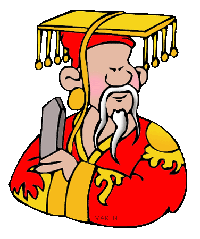Chinese Daily Life
In ancient times, a large population of China was that of farmers. The kings, nobles, and merchants formed a small percentage of the total population. There was a wide gap between the economic condition of farmers and that of the kings
Daily life in ancient China was heavily influenced by Confucianism and Taoism, with a strong emphasis on family values and respect for authority. Agriculture was the primary source of livelihood, and social classes were strictly defined. Women had limited rights and were expected to fulfill domestic duties. The invention of paper, gunpowder, and the compass revolutionized Chinese society and had a significant impact on the world.
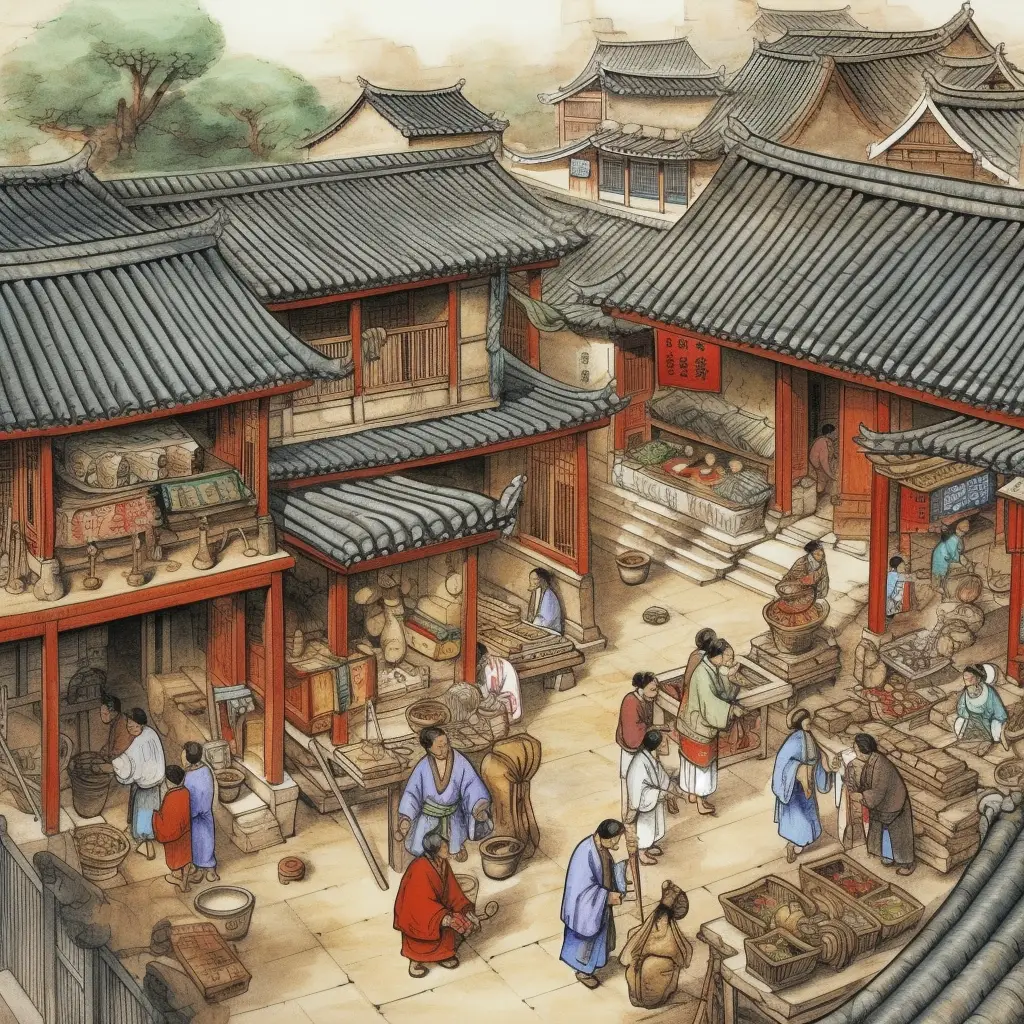
Ancient China Daily Life Facts
- Rice and wheat were staple foods in ancient China.
- Confucianism deeply influenced education and social conduct.
- The family was a central unit in society.
- Agriculture was the backbone of the economy.
- Silk, pottery, and bronze ware were major trade items.
- The “Six Arts” formed the core curriculum in education.
- Courtyard houses were common residential structures.
- Feng Shui guided the design of buildings.
- Markets were important social and economic hubs.
- The Silk Road facilitated international trade and cultural exchange.
Life of Farmers
Farmers had a tough and difficult life. They lived in small villages. They worked day and night, yet they did not even own the land that they worked on. The property was usually owned by the noble or king. In addition to working on the noble’s land, the farmer had to give gifts to the noble.
Although they used plows and animals like dogs and oxen, most of the farm work was still done by hand.
Farmers also celebrated the Spring Festival. This festival was celebrated every year in order to assure a good harvest. This was equivalent to the Chinese New Year.
Farmers had to work for the government for around one month every year. They either had to serve in the military or had to do construction projects like building palaces, canals, and city walls. Farmers were also required to give some percentage of crops to the government as tax.
Chinese Farming
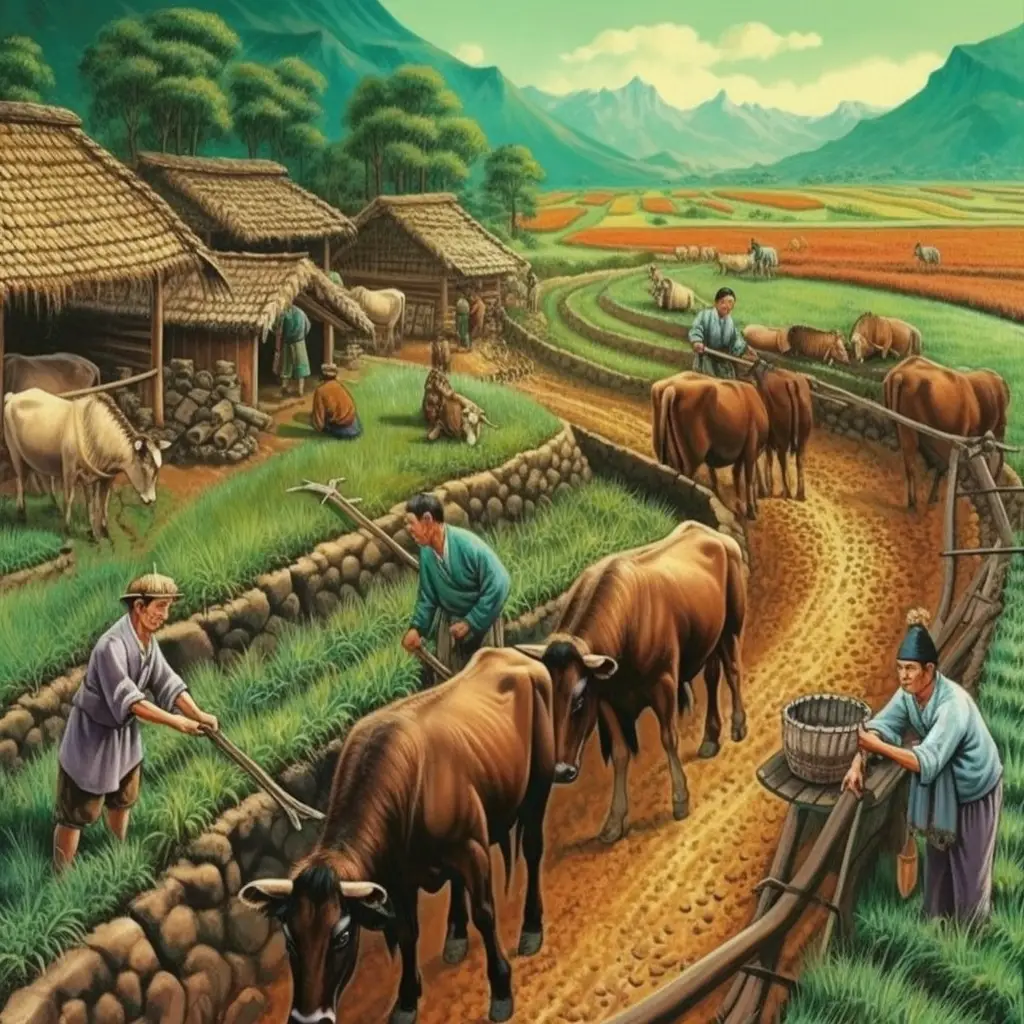
Most farmers were very poor. They owned chickens and pigs and sometimes an ox or mule. In the North, people grew crops of wheat or millet while in the South they grew rice. In the 16th century, new crops such as sweet potatoes, maize, and peanuts were introduced. Other crops included tea, sugar, and cotton.
Food
The rich people of China ate very well. They ate grains like rice, wheat, and millet. They also ate plenty of meat including pork, chicken, duck, goose, and dog. Vegetables included yams, soya beans, broad beans, and turnips as well as spring onions and garlic.
They also ate plenty of fish. Soup was made with shark fins, bird nests, bear paws, and sea slugs. People drank wine made from rice or millet. They also drank tea.
Poor people of China had a boring diet. In the north, people ate wheat in the form of dumplings, pancakes, or noodles. While in the south, the staple food of people was rice. People who lived close to the river ate fish as well.
Chinese Houses
Rich people lived in large wooden houses. Roofs were made of tiles and were built in a curved shape. However, even in a rich house, there was little furniture but rich people were very fond of their gardens.
Poor people lived in huts of perhaps 2 rooms. Roofs were often thatched and furniture was very basic such as wooden benches.
Life in City
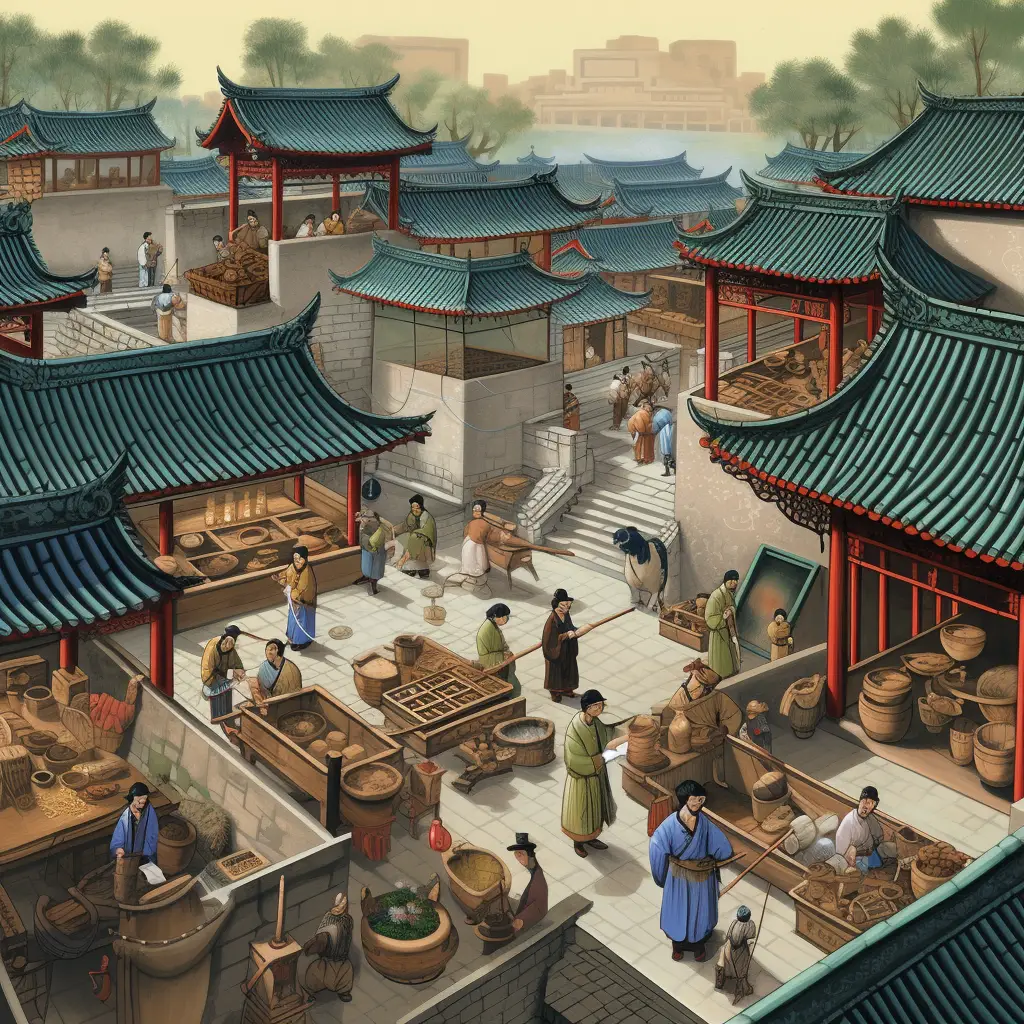
On the other hand, life in cities was very different. People in the city had jobs like merchants, craftsmen, scholars, or government officials. The merchants in ancient China were neglected. They were not given much importance in their social life.
During the time of wars, they were not allowed to enter the boundaries of the city till the war ended. The merchants were expected to defend themselves without any kind of help from the authorities.
Family Life
China was a male dominating society. In the Chinese family, the father ruled over his wife and children. The male had much more power over the household than the females.
The eldest male (usually the father) was in charge and dominated the affairs of all the family members.
The daily life of women at this time was filled with taking care of the home and the children. The structure and differences between genders were greatly emphasized. The woman had to respect and obey her husband at all times. Women almost never were married to the men of their choice. If she did something wrong, her family would be in disgrace.
Education Gap, and Painful Practices in Ancient Societies
A lot of importance was given to the male heir as he carried on the family. Girls were valued much less than boys and baby girls were often killed. In any case, the infant mortality rate was high.
Only boys went to school. There they learned the teachings of Confucius and calligraphy. Of course, only a minority of boys went to school. Most did not. Instead, they worked in the fields from an early age.
Young girls had their feet painfully bound to prevent their feet from growing because small feet were considered attractive. This often caused their feet to become deformed and made it difficult to walk. This practice of binding the feet was called foot binding(Lotus feet).
Chinese Weapons
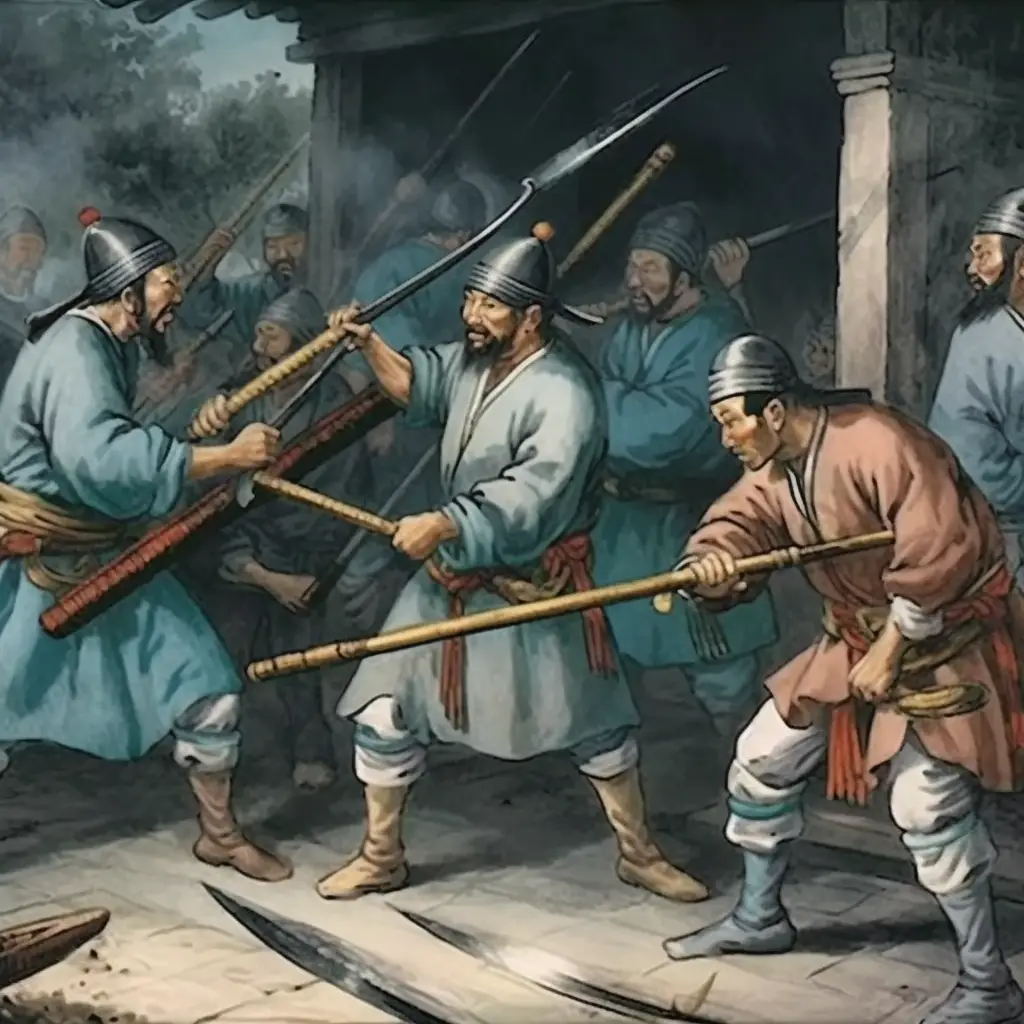
Before 600 BC, chariots dominated Chinese warfare. After 600 BC, cavalry began to replace chariots. Furthermore, rulers began to raise large armies of infantry. About 500 BC a general called Sun Tzu wrote a book called The Art of War, which was the world’s first military manual. About 400 BC the crossbow was invented in China.
Gunpowder was probably invented around the year 900 AD. It was used for rockets, grenades, and bombs.
Social Hierarchy in Ancient China
The social hierarchy in ancient China was a central part of daily life. It was divided into four tiers: scholars, farmers, artisans, and merchants. Scholars, being the educated elite, occupied the highest rank. Farmers were considered important due to their role in food production.
Artisans and merchants were placed lower, despite the value they brought to society. This hierarchy influenced an individual’s occupation, societal respect, and opportunities, thus structuring society and maintaining stability.
Agriculture in Ancient China
Agriculture was the cornerstone of daily life in ancient China. Most of the population were farmers, growing crops such as rice, wheat, and millet. The seasons structured the rhythm of daily life, as various times of the year were dedicated to planting and harvesting.
Agricultural activities also shaped social interactions and determined economic status. Therefore, agriculture was integral to the daily lives of ancient Chinese people, mirroring the importance of a balanced relationship with nature.
Ancient Chinese Philosophy
Ancient Chinese philosophy, including Confucianism, Daoism, and Legalism, was integral to daily life in ancient China. Confucianism shaped family life and social conduct through its emphasis on respect and morality.
Daoism influenced attitudes toward nature, wealth, and health with its focus on simplicity and harmony. Legalism informed governance and societal organization with its strong emphasis on laws. These philosophies not only guided individual behavior but also permeated aspects like education, arts, and the economy.
Ancient Chinese Art and Culture
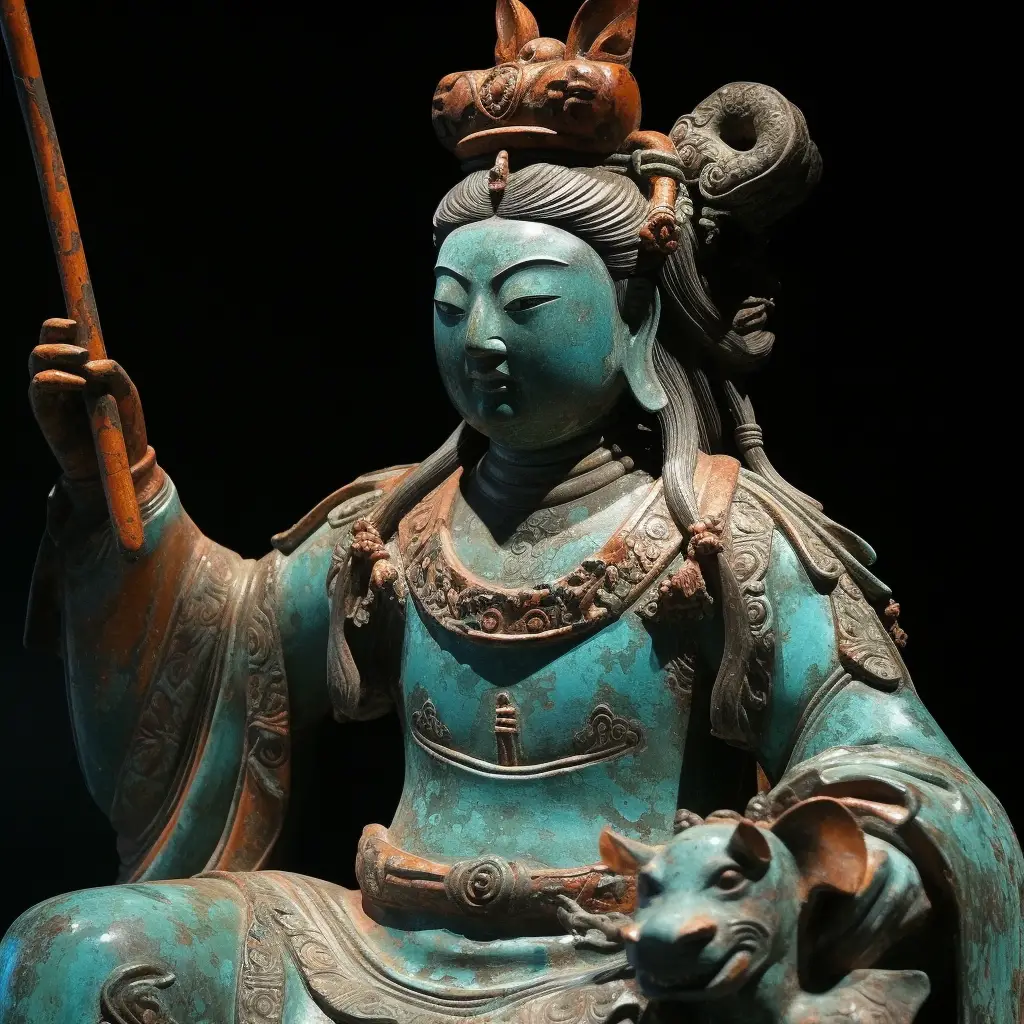
Art and culture in ancient China were an integral part of daily life, reflecting societal values and lifestyles. Pottery and silk textiles showcased intricate designs, while calligraphy, highly valued as an art, was also used in common communication.
Painting often depicted landscapes and everyday life, illustrating the environment and routines of the populace. Music and dance were central to celebrations, and literature, especially poetry, encapsulated the spirit of the era. In essence, art and culture enriched daily life and provided a connection to shared heritage.
Food and Cuisine of Ancient China
Food and cuisine were central to daily life in ancient China, mirroring cultural diversity and regional variations. Staples included rice in the south and wheat in the north. Meals typically comprised several dishes shared among family members, reinforcing communal bonds.
Food was also integral to various festivals, with specific dishes linked to particular celebrations. Marketplaces for food items were regular social hubs. Therefore, the cuisine of ancient China was not just about sustenance but also crucial in shaping societal interactions and cultural norms.
Ancient China’s Education System
Education in ancient China was deeply rooted in daily life, reflecting the society’s emphasis on learning and moral development. Confucian principles formed the educational foundation, focusing on moral virtues and respect.
Education typically began at home, particularly for boys from wealthier families, covering a broad curriculum known as the “Six Arts”. For ambitious students, passing the challenging imperial exams based on Confucian texts was a critical objective. Schools were also social platforms where students formed influential networks.
Thus, education in ancient China significantly influenced societal structure and cultural norms.
Ancient Chinese Architecture
Architecture in ancient China was a critical aspect of daily life, embodying practical needs and cultural beliefs. The courtyard house was the prevalent residential structure, symbolizing the importance of family. Building materials ranged from bamboo and wood to bricks and stone, reflecting the inhabitant’s social status.
Feng Shui principles often dictated building designs to harmonize with the environment. Temples and palaces displayed imperial architecture’s grandeur, while rural homes were simpler, suiting the climate and farming lifestyle. In essence, architecture was a tangible reflection of cultural values, social status, and respect for nature in ancient China.
Trade and Economy of Ancient China
Trade and economy significantly impacted daily life in ancient China, shaping livelihoods and societal norms. Farming formed the economic backbone, but with the rise of handicraft industries, cities evolved into dynamic trade hubs.
Artisans crafted goods for local and international trade, fostering a robust trade network. Coinage was used, enhancing efficiency in the trade of goods and services. Marketplaces served as economic and social gathering spots.
Additionally, the Silk Road facilitated international trade and cultural exchanges. In essence, trade and economy were not only essential for survival but also pivotal in social interaction and cultural development in ancient China.

